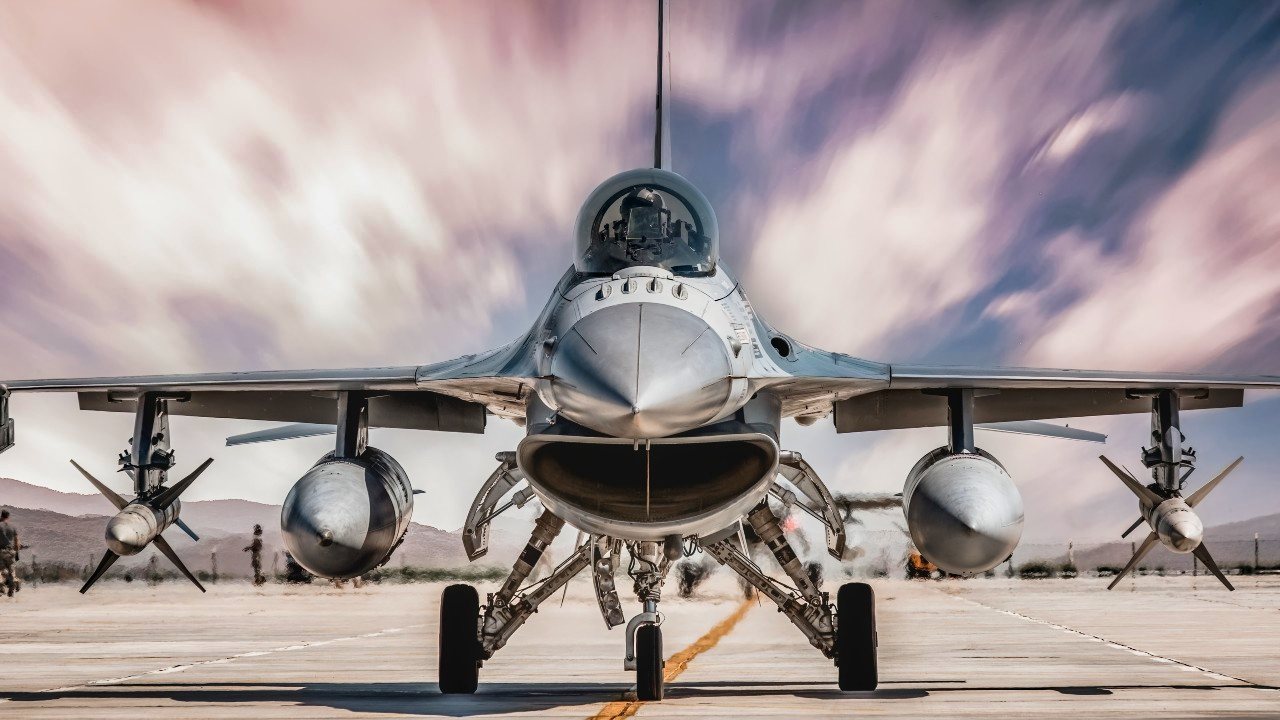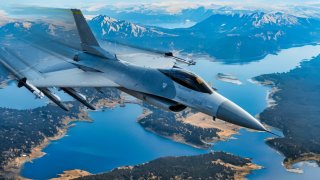F-16 Block 70/72 Fighter: 5 Reasons This is the Best F-16 Ever
The F-16 Fighting Falcon, one of the most prolific fourth-generation fighters, continues to dominate the skies thanks to significant upgrades ensuring its relevance in modern warfare. The F-16 Block 70/72 continues this trend.
Summary: The F-16 Fighting Falcon, one of the most prolific fourth-generation fighters, continues to dominate the skies thanks to significant upgrades ensuring its relevance in modern warfare. Since its debut in 1978, the Falcon has been a staple in global conflicts, operated by the U.S. Air Force and 26 other nations. Lockheed Martin's latest variant, the Block 70/72, introduces substantial improvements, including an extended service life of 12,000 hours, conformal fuel tanks for increased range, the advanced APG-83 AESA radar for superior targeting, the Legion IRST pod for passive target detection, and the Auto GCAS to prevent ground collisions.
Revolutionizing Air Combat: The Upgraded F-16 Block 70/72 Takes Flight
The F-16 “Fighting Falcon” is one of the oldest and storied fighters still flying today. Operated by the U.S. Air Force and 26 other nations, it is one the most produced fourth-generation fighters, with over 2,000 currently operational.
First introduced in 1978, the Falcon has served successfully in multiple global conflicts.
To stay relevant in the modern battlespace, both the manufacturer and operator nations have upgraded it multiple times. Lockheed Martin is currently producing the latest variant, Block 70/72, for multiple countries.
These upgraded F-16s have multiple improvements that make them the best Falcons ever produced.
External Upgrades: 12k hr Service Life & Conformal Fuel Tanks:
One of the major enhancements to the new fighters is their increased service life. In keeping with other upgrades to fourth-generation aircraft - notably the F/A-18 Block III - designers sought to make these aircraft last as long as possible. With a projected service life of 12,000 hours, 1.5 times greater than previous models, Lockheed Martin anticipates the F-16 will be serving into the 2060s. If this is the case, it will be one of the longest serving combat aircraft ever at over nine decades of service.
In addition to greater resiliency and lifespan, the Block 70/72 has distinctive conformal fuel tanks on top of its fuselage. These tanks increase fuel capacity and range; a problematic compromise to achieve as more fuel usually equates to more drag.
The added performance grants these F-16s a combat range of approximately 800 miles, 300 more than previous variants.
APG-83 AESA Radar:
Previous F-16 featured older, mechanically scanned radars. The new APG-83 AESA radar produced by Northrop Grumman provides “5th Generation Fighter Radar Capability for the 4th Gen Aircraft.”
Sharing commonality with the APG 77 fielded by the F-22 and the APG 81 on the F-35, the addition of this system to the Block 70 F-16 represents a major upgrade in sensor technology, allowing the aircraft to engage in precision radar targeting of surface targets while detecting and tracking smaller airborne targets.
Legion IRST
In addition to the APG 83 radar, these F-16s roll off the line fully integrated with the Legion IRST targeting pod. Like the sensors built into the F-35, the Legion pod uses infrared instead of radar returns to detect and track targets. This can provide a huge advantage as it is a “passive” system, meaning the jet is not radiating any energy. When an aircraft uses its radar set, it is emitting a large amount of energy that adversaries can detect. IRST sensors avoid that risk and allow their host aircraft to remain undetected longer.
Auto GCAS
One of the biggest enhancements that is not technically directly related to combat is the addition of an Auto Ground Collision Avoidance System (Auto GCAS) into the software of the Block 70. Designed by Lockheed Skunk Works, NASA, and the Air Force Research laboratory, Auto GCAS was first included in the F-35 fleet in 2019. It is an important safety feature to mitigate Controlled Flight Into Terrain (CFIT) mishaps.
These can occur due to task saturation, target fixation, Gravity-Induced Loss of Consciousness (GLOC), or a variety of other factors and result in the loss of a perfectly good aircraft and the tragic death of the pilot.
In order to prevent CFIT, the system detects when the aircraft is in an undesirable state and may impact terrain. If the pilot does not take immediate action, the Auto GCAS assumes control of the aircraft, rolls wings level and initiates a 5g pull up to the horizon.

This harrowing video of an Air National Guard training flight shows an F-16 pilot losing consciousness due to high G and being saved by the GCAS system.
Upgraded Modular MC/Digital Display
All of the new sensors as well as the data link network to other assets will provide a host of information to the pilot who could easily become overwhelmed. That’s where the new Modular Mission Computer (MC) and 6x8 inch Center Pedestal Display come in.
The new MC replaces three aging systems and “provides higher computing power to the avionics and weapon systems, while offering improved situational awareness, air-to-air strike performances, accurate targeting and information capabilities.” All this means it will better synthesize and present information to the pilot on the new large color display.
Although the U.S. Air Force is no longer ordering new F-16s; many of the upgrades the Block 70/72 represents can be retrofitted to their older airframes. In addition, multiple foreign nations have ordered the new Falcons as Lockheed apparently has 133 currently on order.
All these nations recognize the massive advantage the Block 70/72 brings to their fourth-generation fighter fleet, which means this prolific fighter jet will take to the skies for decades.
About the Author: Maya Carlin
Maya Carlin, National Security Writer with The National Interest, is an analyst with the Center for Security Policy and a former Anna Sobol Levy Fellow at IDC Herzliya in Israel. She has by-lines in many publications, including The National Interest, Jerusalem Post, and Times of Israel. You can follow her on Twitter: @MayaCarlin.
Image Credit: Shutterstock.


